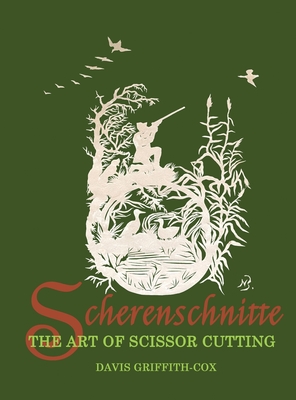Scherenschnitte: The Art of Scissor Cutting

Scherenschnitte: The Art of Scissor Cutting
Hundreds, perhaps, thousands of art books have been written with regard to most every art form and media conceivable. The Greeks and Romans wrote in great detail about both media and technique. Paper and papyrus were invented early on (circa 200 BCE) which soon gave added diminution to the art form. In china paper was first used as patterns for clothing and embroidered shoes. The Mayans used paper to form foldout illustrated books. Each country developed its own indigenous form of expression. In Mexico homes were decorated with stylized cut out forms which became banners and garlands. Some cuttings were forms of flora and fauna and individual shapes. It was the Germans and Austro-Hungarians who began depicting scenes and telling stories for people who often could neither read nor write.
A few storytellers such as Hans Christian Anderson entertained audiences by cutting out scenes while telling tales to mesmerized audiences. Soon the English followed suit and ultimately "The Victoria and Albert Museum" amassed a formidable collection of what became known as "Scherenschnitte," the German word for paper cutting as an art form.
We have compiled this refreshing book which follows an alternative format. Very few books have told the story of one of the most skillful art forms which starts with a blank piece of paper and NO preliminary drawing ... only scissors. We believe our collection to be every bit as good as that at the V.&A.
By about 1870 the technique of "plein air art" was developed. One created outdoor scenes and live models in natural settings rather than working in secluded studio settings. For the truly talented, a photographic memory allowed works to be subsequently recorded almost verbatim, as they had been previously seen ... an assistor of tragic adversity which blossomed into a truly remarkable sophisticated and professional talent. Take a journey into a refreshingly skillful alternative art form and find yourself amazed at this little-known art form at its very best.
347.20Lei
347.20Lei
Indisponibil
Descrierea produsului
Hundreds, perhaps, thousands of art books have been written with regard to most every art form and media conceivable. The Greeks and Romans wrote in great detail about both media and technique. Paper and papyrus were invented early on (circa 200 BCE) which soon gave added diminution to the art form. In china paper was first used as patterns for clothing and embroidered shoes. The Mayans used paper to form foldout illustrated books. Each country developed its own indigenous form of expression. In Mexico homes were decorated with stylized cut out forms which became banners and garlands. Some cuttings were forms of flora and fauna and individual shapes. It was the Germans and Austro-Hungarians who began depicting scenes and telling stories for people who often could neither read nor write.
A few storytellers such as Hans Christian Anderson entertained audiences by cutting out scenes while telling tales to mesmerized audiences. Soon the English followed suit and ultimately "The Victoria and Albert Museum" amassed a formidable collection of what became known as "Scherenschnitte," the German word for paper cutting as an art form.
We have compiled this refreshing book which follows an alternative format. Very few books have told the story of one of the most skillful art forms which starts with a blank piece of paper and NO preliminary drawing ... only scissors. We believe our collection to be every bit as good as that at the V.&A.
By about 1870 the technique of "plein air art" was developed. One created outdoor scenes and live models in natural settings rather than working in secluded studio settings. For the truly talented, a photographic memory allowed works to be subsequently recorded almost verbatim, as they had been previously seen ... an assistor of tragic adversity which blossomed into a truly remarkable sophisticated and professional talent. Take a journey into a refreshingly skillful alternative art form and find yourself amazed at this little-known art form at its very best.
Detaliile produsului










